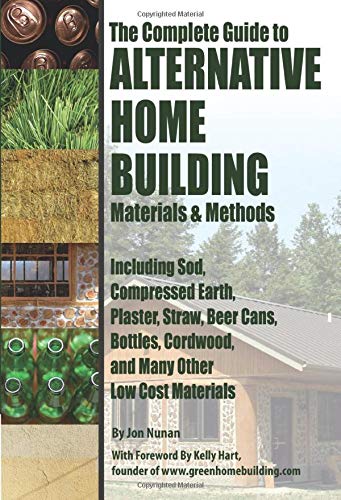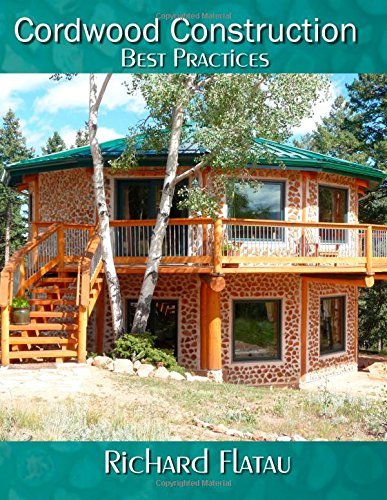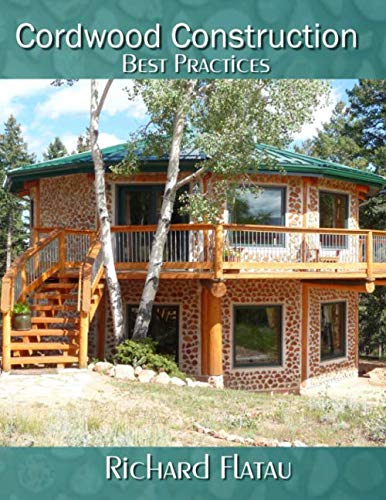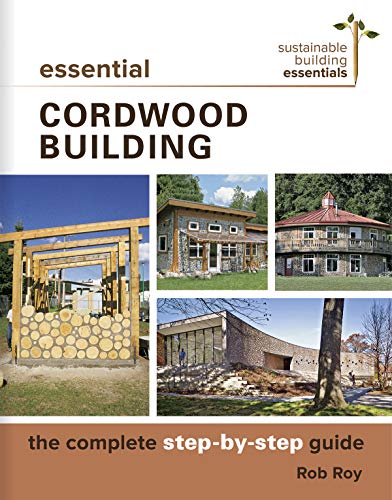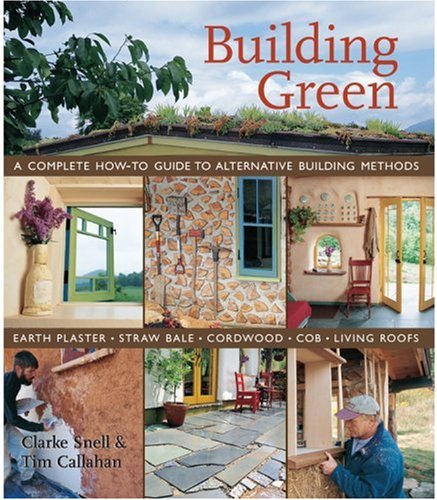Best Cordwood Home Construction Techniques (2024 Update)
Looking to build an efficient, sustainable home? Cordwood construction may be the answer. This unique building technique uses short logs stacked sideways and mortared together to form insulated walls. Cordwood has many advantages for those seeking an affordable, eco-friendly dwelling.
When considering cordwood construction, think about your climate and heating needs. How much insulation do walls require to keep your home comfortable? Cordwood’s thick log ends provide excellent insulation, but extra insulation may be needed in extremely cold regions. Also factor in sourcing materials locally, as transporting logs over long distances reduces environmental benefits.
Will you do work yourself or hire a contractor? Cordwood’s stacked log pattern involves specialized skills. DIY builders need proper instruction to avoid moisture issues. Consider taking a workshop or hiring experienced cordwood builders for best results.
While cordwood homes require careful planning, the benefits are plentiful. This natural style provides character and charm while using local and recycled materials. With proper siting and design, cordwood can create an efficient, healthy home to enjoy for generations. Discover more about this sustainable building method for your dream green homestead.
9 Best Cordwood Home Construction Techniques
| # | Product Image | Product Name | Product Notes | Check Price |
|---|---|---|---|---|
|
1
|
Ideal for individuals seeking low cost and alternative building methods/materials for sustainable home construction.
|
|
||
|
2
|
This product is ideal for storing firewood indoors or outdoors with a cover to prevent it from getting wet.
|
|
||
|
3
|
Ideal for outdoor firewood storage due to its heavy-duty steel construction and all-weather cover.
|
|
||
|
4
|
Ideal for those interested in building log homes using sustainable resources and traditional techniques.
|
|
||
|
5
|
It is ideal for learning efficient and sustainable building techniques using cordwood construction methods.
|
|
||
|
6
|
Ideal for efficient mowing of large areas with tight corners and obstacles at a reasonable cost.
|
|
||
|
7
|
This product is ideal for those interested in sustainable building and learning the step-by-step process of cordwood construction.
|
|
||
|
8
|
This product is ideal for individuals interested in learning about construction materials, methods, and techniques used in the industry.
|
|
||
|
9
|
This product is ideal for those seeking alternative and sustainable building methods, including earth plaster, straw bale, cordwood, cob, and living roofs.
|
|
1. Usa-Made Heavy Duty Firewood Rack With Cover
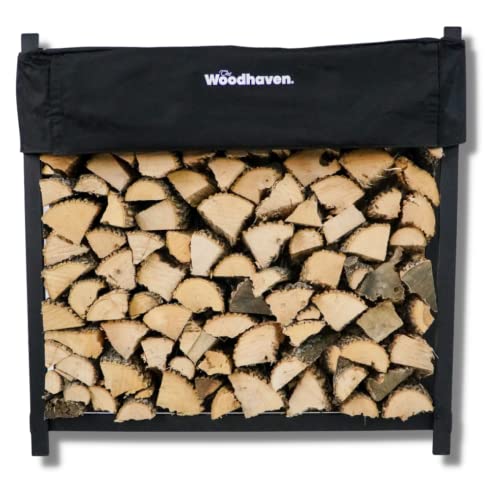
This firewood rack is a must-have for anyone looking to keep their firewood neatly organized and easily accessible. With the ability to actively season and cure up to ¼ cord of firewood, this rack is the perfect addition to any outdoor patio or garage.
One of the key features of this firewood rack is its strength. Hand arc welded and precision drilled, you can trust that this rack won't break or collapse under the weight of your firewood. The manufacturer even backs up their quality with a lifetime structural warranty for added peace of mind.
Another great feature of this firewood rack is its powder coat finish. The UV stable paint is able to withstand all types of weather conditions, ensuring that your rack will look great for many years to come. Additionally, the texture of the finish is great at hiding any scuffs or scratches that may occur over time.
Installation of this firewood rack is a breeze, and can be completed with only the provided hardware and a 7/16 wrench. Within no time at all, you'll have a sturdy and secure place to store your firewood.
Finally, it's worth noting that this firewood rack is proudly made in the USA. Designed and engineered by the Alexander family since 1927, you can trust that this rack is made with the utmost care and attention to detail. Overall, this firewood rack is a great investment for anyone looking to keep their firewood organized and easily accessible.
2. Usa-Made Firewood Rack With Lifetime Warranty
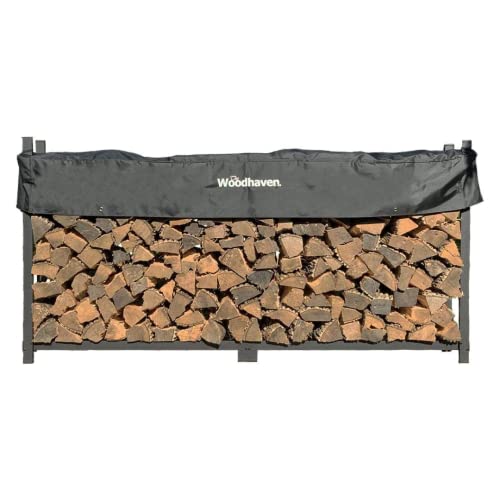
If you're looking for a reliable way to organize and store large amounts of firewood, look no further than this firewood rack. Designed to actively season and cure 1/2 cord of firewood, this rack is perfect for anyone who wants to keep their wood dry and ready to burn.
One of the standout features of this firewood rack is the included seasoning cover. This cover keeps the majority of the wood exposed to the elements, allowing it to dry and season naturally. Meanwhile, the wood under the cover stays dry and ready to burn. With this setup, you'll never have to worry about your firewood being too wet or taking too long to dry.
Another great feature of this rack is the hand arc welded and precision drilled holes. This ensures that the rack is sturdy and won't break, even when it's loaded up with a lot of heavy wood. You can rest easy knowing that your firewood is stored safely and neatly. Plus, the manufacturer backs up their quality with a lifetime structural warranty.
The powder coat finish is another highlight of this firewood rack. The UV stable paint can handle all the elements, so you don't have to worry about rust or fading. Plus, the texture of the finish is great at hiding scuffs and scratches, so your rack will look great for years to come.
One unique feature of this rack is the design of the seasoning cover. It covers the top 12" of the wood and automatically adjusts for the amount of wood in the rack. This means that you can easily add or remove wood without having to adjust the cover manually.
Finally, it's worth noting that this firewood rack is made in the USA. It's designed and engineered by the Alexander family, who have been in business since 1927. With a long history of quality products and satisfied customers, you can trust that this firewood rack will meet your needs and exceed your expectations.
Best Cordwood Home Construction Techniques FAQs
How do you choose the right mortar for cordwood building?
Choosing the right mortar for cordwood building is crucial as it affects the overall strength and durability of the structure. The most common types of mortar used for cordwood building are lime-based, cement-based, and earthen.
Lime-based mortar is a popular choice because it is breathable and allows moisture to escape, which is important for the longevity of the cordwood walls. It also has a flexible quality that allows for natural movement in the wood. However, it requires a longer curing time and can be more expensive than other types of mortar.
Cement-based mortar is a strong and durable option, but it is not as breathable as lime-based mortar and can trap moisture in the walls. This can lead to issues with mold and rot over time.
Earthen mortar is another option that is made from natural materials and can be easily sourced. It is breathable and has a low environmental impact, but it may not be as strong as other types of mortar and may require more maintenance over time.
Ultimately, the choice of mortar will depend on factors such as the climate, the availability of materials, and personal preference. It is important to research and consult with experts to ensure that the chosen mortar will provide the necessary strength and durability for the cordwood building.
How do you design a cordwood home for energy efficiency?
When designing a cordwood home for energy efficiency, there are several key factors to consider. First and foremost, it is important to think about insulation. Cordwood walls are known for their excellent insulation properties, but it's important to ensure that the walls are built to the appropriate thickness and that they are properly sealed to prevent air leaks.
Another important factor to consider is the orientation of the home. By orienting the home to take advantage of passive solar heating, you can reduce your heating costs and improve your overall energy efficiency. This may involve positioning the home to face south or incorporating features such as large windows or a solarium.
In addition to insulation and orientation, it's important to think about the type of heating and cooling system you will use. Many cordwood homes rely on wood stoves or radiant floor heating, both of which can be very efficient if designed and installed correctly.
Finally, paying attention to the details can make a big difference in energy efficiency. This might include incorporating energy-efficient lighting and appliances, sealing any gaps or cracks in the home, and choosing energy-efficient windows and doors. By considering all of these factors, you can design a cordwood home that is both beautiful and energy-efficient.
How do you ensure structural integrity in cordwood home construction?
Cordwood home construction is a unique building technique that utilizes cordwood or firewood to create walls. To ensure the structural integrity of a cordwood home, there are several important factors to consider.
Firstly, it is crucial to select quality materials that are suitable for construction. The wood should be straight and uniform in size, and free of rot and insect damage. The mortar used to hold the wood together should be a mix of sand, lime, and cement, with the right proportions of each component.
Secondly, the design of the cordwood wall should include adequate thickness and height to provide sufficient strength and stability. Generally, the recommended thickness of cordwood walls is 16-24 inches for optimal strength and insulation.
Thirdly, the corner posts and lintels should be made of sturdy materials such as concrete, steel or wood. These elements help to distribute the weight of the roof and provide additional support to the walls.
Finally, it is important to ensure proper drainage and foundation to prevent moisture buildup and settling. A good foundation ensures that the walls remain level and the structure remains stable over time.
Overall, ensuring the structural integrity of a cordwood home requires careful planning, quality materials, and attention to detail during construction.
How do you properly prepare and stack cordwood for building?
Proper preparation and stacking of cordwood is essential for building a sturdy cordwood structure. Firstly, select appropriate wood types such as oak, ash, or birch, cut them in equal sizes (16 to 18 inches in length), and let them dry for at least six months. Once the wood is dry, you can start stacking.
To begin, create a level base with a layer of gravel, then lay a row of logs on top of this, using a mortar to secure the ends. Continue the process, alternating the direction of the logs at each level, and using spacers to ensure consistent gaps between the logs.
It's essential to maintain uniform logs and maintain a consistent width; otherwise, the wall will be uneven. Additionally, always use a moisture meter to ensure that the wood is dry enough to use. Finally, use a breathable finish like lime plaster to protect the wood and enable it to breathe.
Proper preparation and stacking of cordwood will ensure that your structure is durable, aesthetically pleasing, and stands the test of time.
What are some common mistakes to avoid in cordwood home construction?
Cordwood home construction is a unique and eco-friendly way of building a house. However, like any other construction method, there are some common mistakes that you should avoid. One of the most important things to keep in mind is to use dry wood. If you use green or wet wood, it can lead to shrinkage and cracking, which can compromise the structural integrity of the walls. It's also important to avoid using large pieces of wood, as they can cause uneven settling and make the walls unstable. Another mistake to avoid is using the wrong mortar mix. The mortar should be a mix of sand, lime, and cement, and it should be applied evenly to ensure a strong bond between the logs. Lastly, it's important to have a solid foundation to support the weight of the walls. A weak foundation can cause the walls to sink and crack over time. By avoiding these common mistakes, you can ensure that your cordwood home is sturdy, durable, and built to last.
What are the benefits of using cordwood as a building material?
Cordwood construction is a unique building technique that involves stacking short logs or pieces of firewood in a wall, and then filling the gaps between them with mortar or insulation. This method of construction offers several benefits that make it an attractive option for many builders. Firstly, cordwood is an eco-friendly building material as it is a renewable resource that is often locally sourced. Additionally, cordwood homes are highly energy-efficient, as the walls have a high thermal mass that helps to regulate indoor temperatures. This can lead to significant savings on heating and cooling costs over time. Cordwood construction is also relatively affordable and can be done with basic tools, making it accessible to do-it-yourself builders. Lastly, cordwood homes have a unique and rustic aesthetic that can add character and charm to any property. Overall, cordwood construction is a durable, energy-efficient, and environmentally conscious building technique that is worth considering for your next project.
What are the best types of wood to use for cordwood construction?
Cordwood construction is a method of building that involves using short logs or pieces of wood, also known as “cordwood,” to create a wall. The type of wood used in cordwood construction can greatly impact the durability and overall appearance of the structure.
The best types of wood for cordwood construction are those that are dense and dry. Some examples of dense hardwoods that work well for cordwood construction include oak, hickory, and maple. These woods are known for their strength and durability, making them ideal for building a long-lasting structure.
Softwoods like pine and cedar can also be used for cordwood construction. While not as dense as hardwoods, they are still strong and can provide a rustic appearance to the structure.
It is important to note that the wood used for cordwood construction should be properly dried and seasoned to prevent shrinkage and cracking. It is recommended to let the wood dry for at least six months to a year before using it for construction.
Overall, the best types of wood for cordwood construction are those that are dense, dry, and properly seasoned.
What are the best ways to insulate a cordwood home?
Cordwood homes are unique and beautiful structures, but they can be challenging to insulate due to their unusual wall construction. However, there are several effective ways to insulate a cordwood home. One option is to use a combination of rigid foam board insulation and blown-in cellulose insulation. The foam board insulation is installed on the exterior of the walls, while the blown-in cellulose is added to the cavities between the cordwood logs. Another option is to use straw bale or hempcrete insulation. These materials are eco-friendly and provide excellent insulation. They can be added to the walls during construction or added later as retrofit insulation. Additionally, using double-glazed windows, sealing air leaks, and using insulated doors are all essential steps to take to ensure your cordwood home is properly insulated. It is important to consult with a professional insulation contractor who has experience with cordwood homes to determine the best insulation options for your home.
What are the maintenance requirements for a cordwood home?
Cordwood homes are unique and beautiful structures that require proper maintenance to ensure their longevity. The maintenance requirements for a cordwood home are relatively simple, but they are crucial to keep the home in good condition.
One of the most important maintenance tasks is to keep the exterior of the home well-maintained. This includes regularly checking for any cracks or gaps in the mortar and repairing them promptly to prevent water from seeping in. Additionally, it's essential to keep the roof in good condition by clearing any debris and ensuring that the shingles or tiles are in good condition.
Another important maintenance task is to keep the interior of the home dry. This can be achieved by ensuring proper ventilation and using dehumidifiers in areas that are prone to moisture. It's also important to regularly inspect the walls and floors for any signs of water damage.
Finally, it's crucial to have the electrical, plumbing, and heating systems regularly inspected and maintained by a professional. This will help ensure that everything is functioning correctly and reduce the risk of any major issues.
Overall, by following a regular maintenance routine, a cordwood home can last for many years and provide its owners with a unique and comfortable living experience.
What are the most effective cordwood building techniques?
Cordwood building is a unique and eco-friendly way of constructing buildings using wood and mortar. The most effective cordwood building techniques include the use of proper materials, cutting techniques, and mortar application.
One of the most important techniques is the selection of the right type of wood. Softwoods like spruce and pine are commonly used as they have low moisture content and are easy to cut. The logs should be cut evenly, with a length of 12 to 18 inches and a diameter of 6 to 10 inches.
The cutting technique is also crucial in cordwood building. The logs should be cut perpendicular to the grain, and any knots or branches should be removed. This ensures that the logs will fit snugly together and create a tight seal.
The mortar application is the final key technique in cordwood building. Mortar is used to fill the gaps between the logs and provide structural support. It should be applied evenly, with the right consistency and thickness. A good mortar mix should consist of sand, clay, and sawdust or wood chips.
Overall, the most effective cordwood building techniques involve attention to detail and a commitment to quality materials and workmanship. With the right approach, cordwood buildings can be both beautiful and durable, providing a unique and sustainable housing option.


